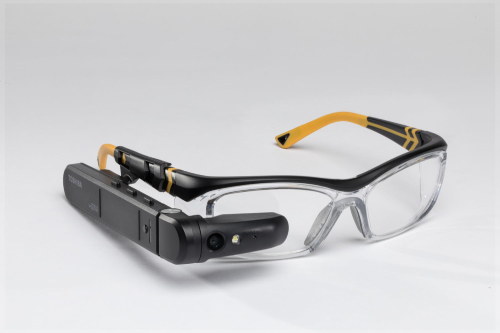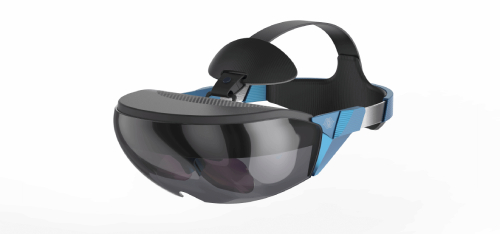From Snapchat Filters To Operation Theatres

Augmented reality is not all fun and games; it also helps surgeons operate with greater precision and clarity
By AATIKA H JAIN
Snapchat has come out with yet another attractive augmented reality (AR) offering combining the virtual world with the real one; one can use Snapabbles to play selfie games with buddies. While AR has been making strides in the gaming field, it has quietly been foraying into the healthcare sector as well. A recent report by US-based market research and consultancy firm Grand View Research Inc. says the market for AR and virtual reality (VR) in healthcare is predicted to reach $5.1 billion by 2025. Last May, surgical navigation company Scopis introduced the mixed reality Holographic Navigation Platform, integrating its surgical navigation technology with Microsoft’s AR headgear HoloLens to assist in spinal surgeries. It overlays pre-planned, 3D screw positions directly onto the patients and helps surgeons correct the position of their instruments and accurately arrange the screws in less time.
What’s AR?
Pokémon Go could possibly be the most familiar example of AR. AR merges the virtual world with the real world in realtime by superimposing digital data onto real world views. The environment around you is augmented or enhanced by adding interactive audio, video, graphics or GPS in real-time. Imagine pointing your cell phone towards a building while taking a stroll and pertinent information immediately popping up on your screen, that’s AR for you. You are using AR when you scan a QR code with your cellphone’s camera to get some supplementary information.
How AR will improve healthcare

Overlaying relevant information onto the physical world may seem a simple enough application but it will be immeasurably advantageous in the medical field. It will provide hands-free patient treatment with improved cost and time efficiency, ease of medical education, and help doctors treat emergency cases quickly and efficaciously. Patient details can be recorded using AR glasses coupled with gesture technology, like the one developed by Atheer. The details are projected in front of the healthcare personnel who then can store them by hand gestures even with gloved hands. Surgeons will be able to see critical patient information and imaging data directly superimposed over the view area using an AR headgear like HoloLens. They will be able to work on the surgical area without taking their eyes off the patient to look at different displays to correlate the information.
Recently, during a reconstructive lower limb surgery, the surgeons at St Mary’s Hospital, London, utilized the HoloLens to superimpose CT scan images onto the leg of the patient. The headgear helped the surgeons view the bones’ position and major blood vessels in the limb during the surgery, reducing the margin of error and time taken. The requirement of fewer displays will minimize the cost and also reduce the possibility of errors, thus improving the efficiency of the medical procedures and lower risks involved. This March, AR was used by surgeons to perform a minimally-invasive sinus operation at the University of Texas Health Science Center at the Houston and Memorial Hermann-Texas Medical Center. Minimum invasion translates to less pain, quicker recovery and a shorter hospital stay.
AR will finally make it possible to gain expert insight into complicated procedures from anywhere in the world. With AR assistance, the expert can actively participate in the medical procedure going on by using Google glasses to virtually overlay his hand to depict the correct method of doing a complex task during the procedure. AR-assisted medical training helps students gain a better understanding of physiology and anatomy. The live streaming of medical procedures provides them with hands-on experience virtually. 3D immersive training for complicated precision-based procedures, which usually takes years to learn, would make for better learning curves for medical students
“WE ARE DEVELOPING AN APP WITH WHICH 3D CT SCANS OR MRI DATA OF A PATIENT CAN BE DIRECTLY OVERLAID OVER HIS BODY HELPING THE SURGEON TO SEE THROUGH THE SKIN. IT WORKS LIKE A GUIDED SURGERY TOOL.”
Pankaj Raut CEO, Dimension NXG
India’s tryst with AR
While India awaits the launch of Microsoft’s HoloLens, a local startup has come up with the country’s first AR headgear that’s going to be available much cheaper. AjnaLens, by Dimension NXG, is a headgear that overlays a virtual 3D image on the wearer’s field of view. “It will provide a much more immersive experience with a bigger field of view of 95 and much better clarity of holograms,” says Pankaj Raut, CEO, Dimension NXG. The holograms can be simulated and interacted with while superimposing them on real-life objects; they can be annotated and simultaneously accessed from anywhere across the globe.“We are developing an app (AjnaSurge, to be used with AjnaLens) with which 3D CT scans or MRI data of a patient can be directly overlaid over his body helping the surgeon to see through the skin. It works like a guided surgery tool,” adds Raut.

Inputs can be given to the headgear using voice, gesture or gaze, making it hands-free. AjnaLens will be launched in September 2018 and is expected to go wireless by 2019. Estimated to be priced at $1500, AjnaLens is supposed to greatly reduce the cost, time and efficiency in various industries by offering end-to-end AR solutions. The healthcare sector is on the verge of a revolution with the advent of AR. There is a brighter, healthier tomorrow waiting WCS.
















